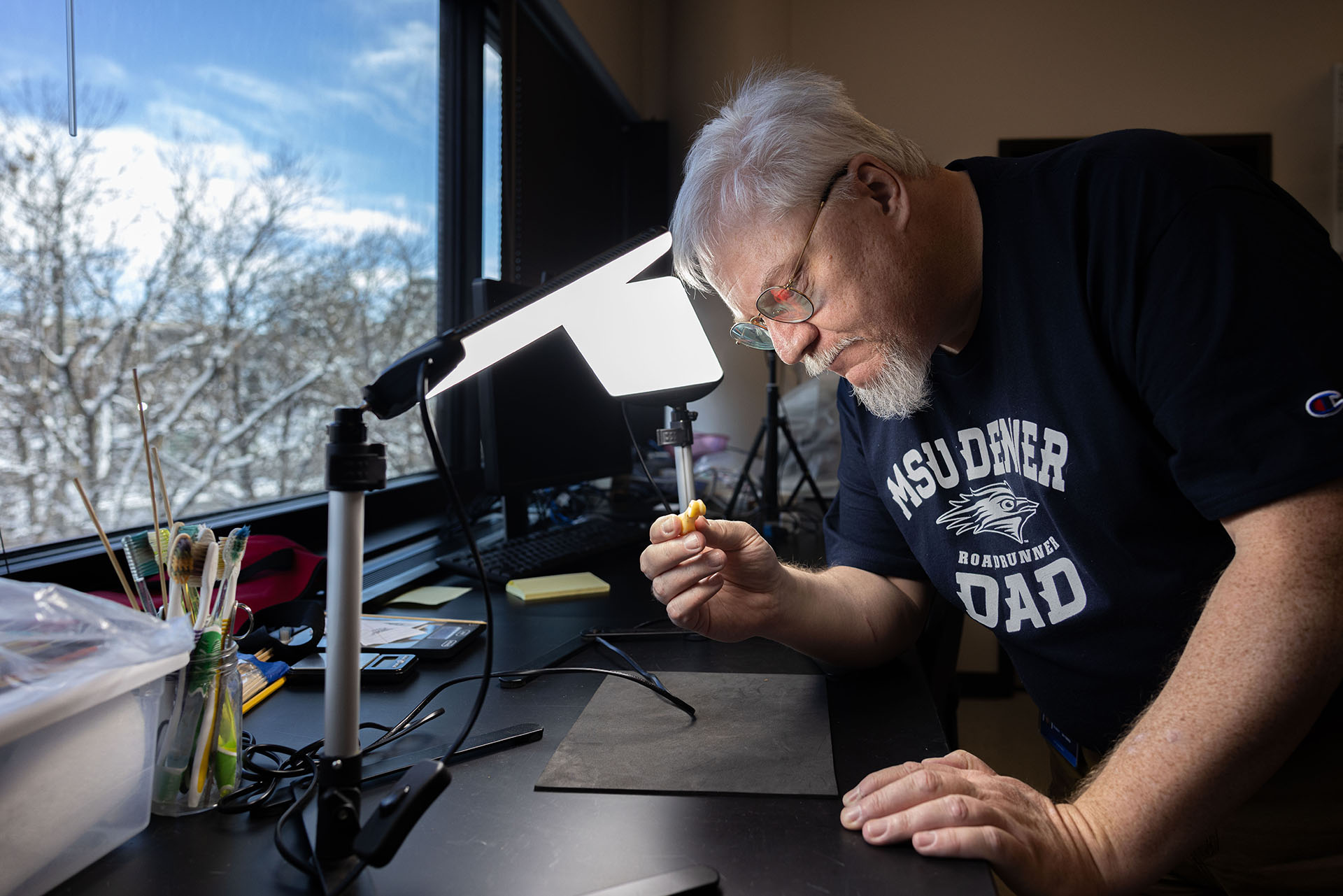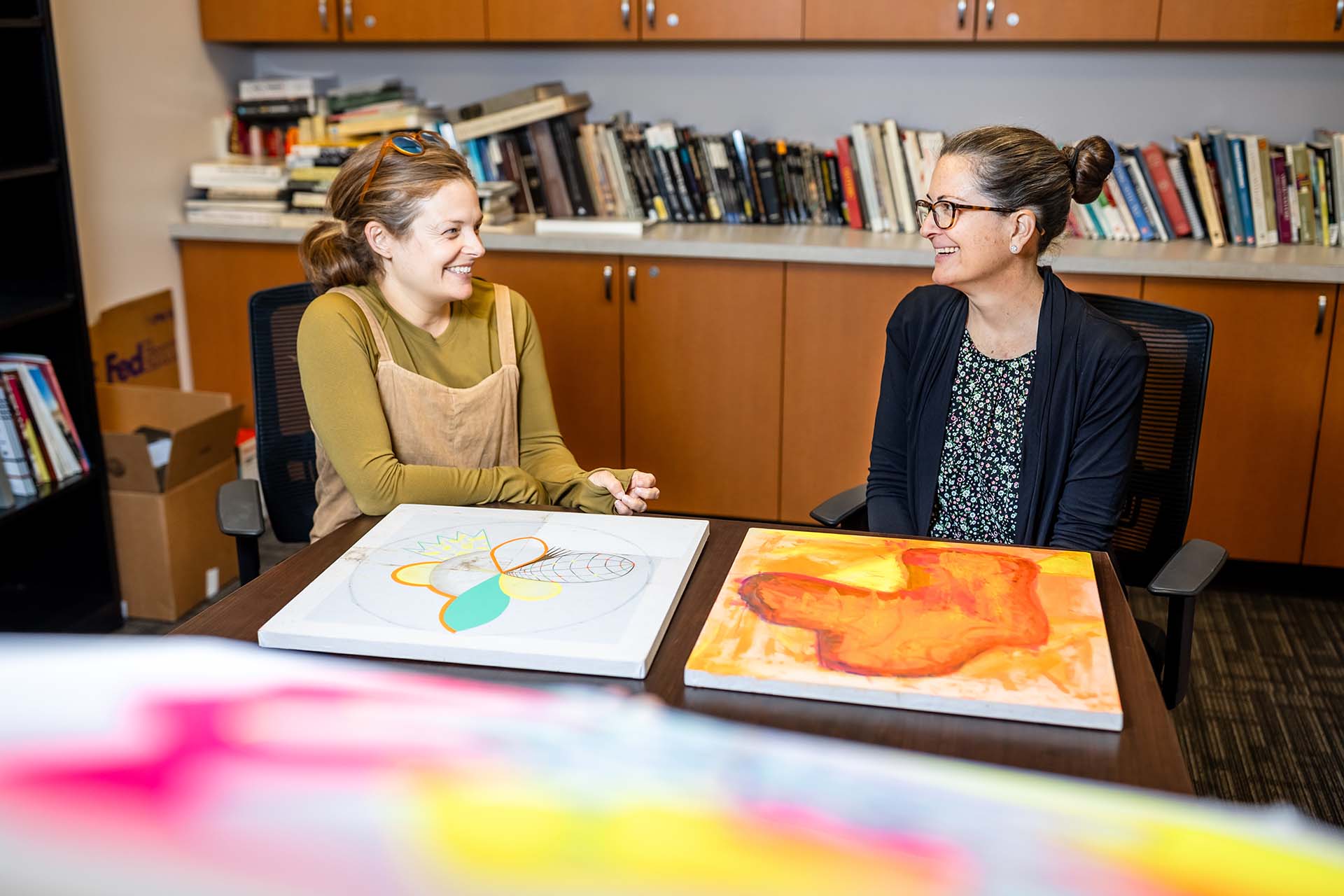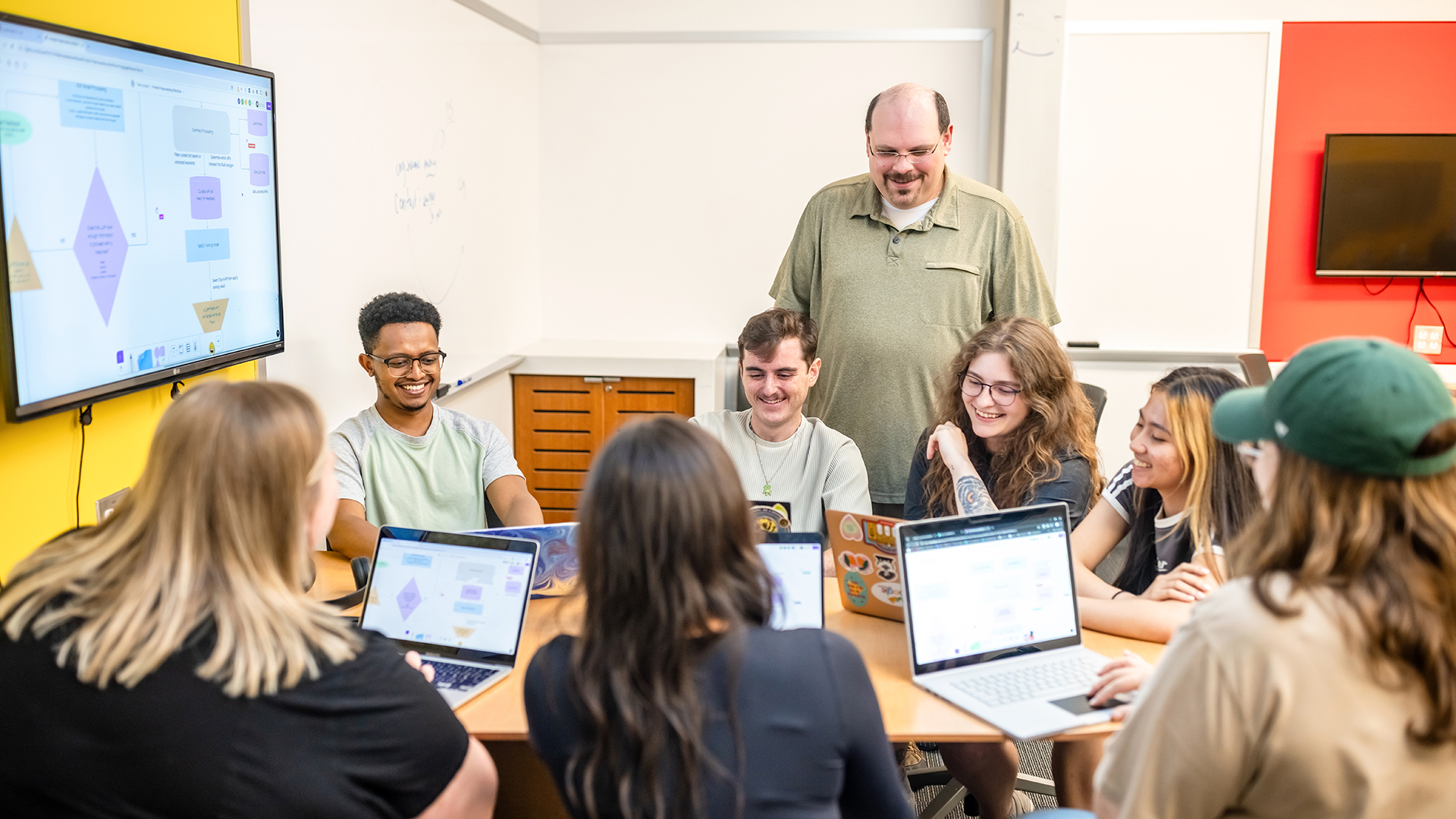Design students scale climbing challenge
When asked to create a lifesaving belay device, these Roadrunners didn’t hang around.

Picture the scene: A climber is 30 feet up a rock face, attached by an anchor to the wall and by rope to a person on the ground.
Suddenly, he slips and falls … and then dangles harmlessly on the rope. That’s because the person on the ground holding him in place, with surprisingly little effort, has run the rope through a belay device.
“Belays are small and very particular instruments, which need to be perfectly calibrated to work correctly,” said David Klein, MFA, a professor in the Department of Industrial Design at Metropolitan State University of Denver. “So I thought constructing one would make a perfect project for my Materials and Design class.”
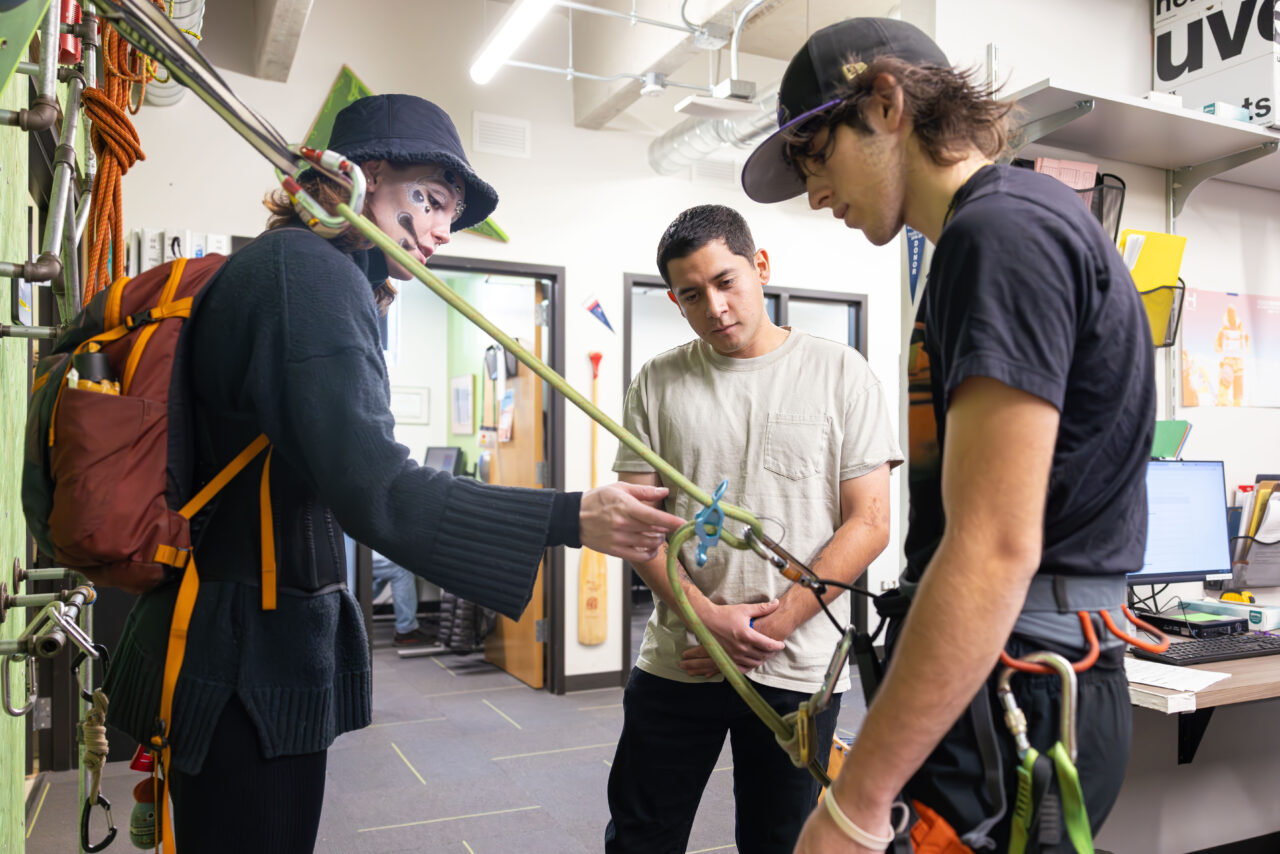
Challenging brief
Klein likes to set unusual challenges that require his students to think on their feet and learn quickly about unfamiliar topics.
But this time, they also had some expert help in the form of Bryan Ferguson, associate director of MSU Denver’s Outdoor Pursuits program. Ferguson acted as a consultant throughout the design and development of the devices. In fact, the whole project was his idea in the first place.
“In the climbing industry,” he explained, “we are constantly looking for the perfect belay device: one that can feed rope out easily but then also quickly and smoothly draw the rope every time.” So, he figured, why not ask some enterprising design students to try tackling this thorny issue?
When Ferguson visited the class, his aim was to critique the students’ initial prototype models and suggest potential improvements. “As someone who knows these devices inside out,” Klein said, “Bryan was looking for potential red flags, while also pointing out where the students had made particularly good design decisions.”
RELATED VIDEO: No time to waste in 24-hour pooper scooper design challenge
Form and function
With this project, Klein had a single, clear objective: emphasizing to his students that industrial design is not always just about making something look pretty.
And, he reasoned, nothing would sharpen their design senses like constructing such a high-stakes device. (With resale belay models, a technical glitch could feasibly send someone hurtling hundreds of feet to a grisly end.)
His plan worked. “At first, my class definitely seemed a little unsure and intimidated by the project, and a couple of them basically said, ‘I’m lost here,’” Klein recalled.
But from long experience, the professor figured his students would hit their stride once they had done some research and looked at the mechanics more closely. Which is exactly what happened.
“Initially, I didn’t know what my end result was going to be, but I was still up for the challenge,” said design student Daniel Hernandez Franco. “I just focused on what I most enjoy about designing — drawing — to visualize my ideas on paper before starting to build them up in 3D.”
Hernandez Franco also got a real boost from the supportive feedback and technical climbing expertise of the Outdoor Pursuits crew. “If it were not for them, I wouldn’t have known what I was doing,” he said.
For their part, Ferguson and his team were intrigued to see how things might eventually pan out. “We were excited to see what ideas might come from the design students,” he said. “In some ways, it was an advantage that they had so little experience with belays, since they didn’t bring any existing biases or preconceptions.”
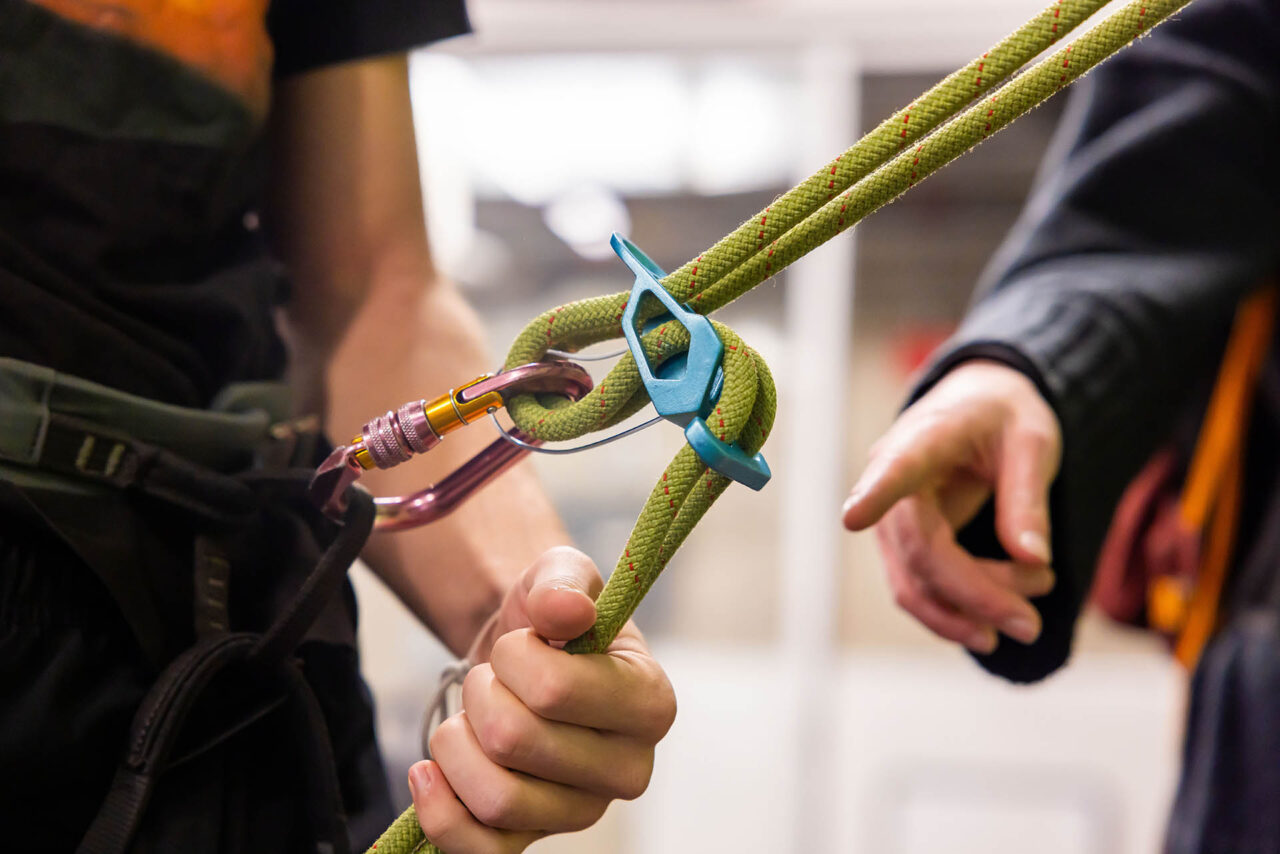
Imaginative leaps
Finally, the big day came for testing the devices at MSU Denver’s climbing wall — and the news was good.
“The final prototypes were impressive, not only from a creative and innovative perspective but also in terms of functionality,” Ferguson said. “It struck me that most students had fundamentally grasped the concept of ‘reeving’ a device — passing a rope through an opening to instigate friction and create a pulley system.”
Crucially, the project was also deemed a success from an educational perspective. “The class did a great job,” Klein said. “For the most part, the basic geometry and aesthetics of the devices were really well done.”
RELATED: Success by design
And where things didn’t quite pan out as well, he said, it was because the students were really going for it — which is also OK.
“School absolutely should be a safe space where you can be bold and take imaginative leaps,” he said. “And where occasional missteps happen, that’s just part of the broader learning experience and has its own value.”
New challenges now await. And because Klein always likes to keep his students on their toes, their next design task will be … salt and pepper shakers.
“Admittedly, the life-or-death stakes won’t be quite so high with this one,” he joked.
By shifting the emphasis so sharply from structure and functionality to aesthetics, he said, he will be pushing his students to call on a whole different set of skills.
“That’s the beauty of our design class,” he said. “You never quite know what the next challenge is going to be.”

